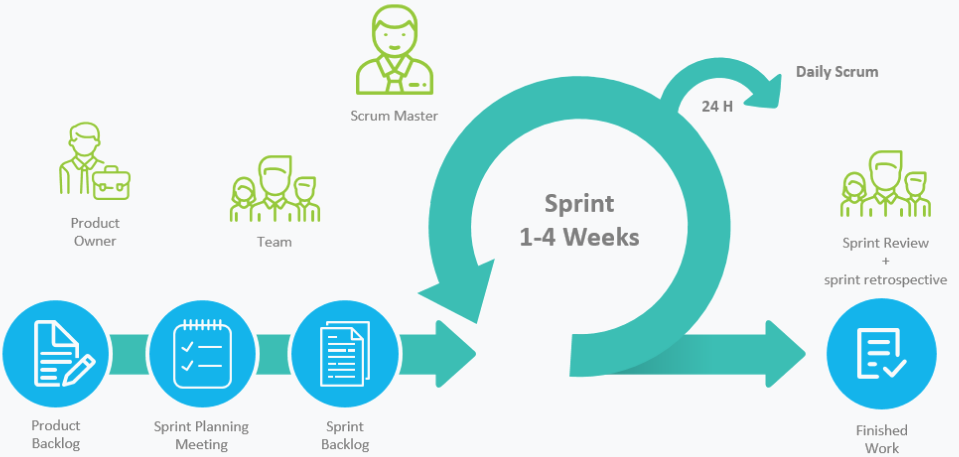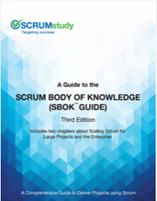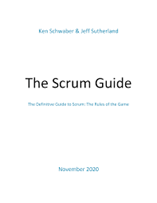Quick guide to Scrum
Learn how Scrum helps teams work together and develop products faster

Learn how Scrum helps teams work together and develop products faster

Scrum is one of the most popular Agile methodologies. It is an adaptive, iterative, fast, flexible, and effective methodology designed to deliver significant value quickly and throughout a project. Scrum ensures transparency in communication and creates an environment of collective accountability and continuous progress. The Scrum framework, as defined in the SBOK® Guide, is structured in such a way that it supports product and service development in all types of industries and in any type of project, irrespective of its complexity.
A key strength of Scrum lies in its use of cross-functional, self-organized, and empowered teams who divide their work into short, concentrated work cycles called Sprints.
The Scrum cycle begins with a Stakeholder Meeting, during which the Project Vision is created. The Product Owner then develops a Prioritized Product Backlog which contains a prioritized list of business and project requirements written in the form of User Stories. Each Sprint begins with a Sprint Planning Meeting during which high priority User Stories are considered for inclusion in the Sprint. A Sprint generally lasts between one and six weeks and involves the Scrum Team working to create potentially shippable Deliverables or product increments. During the Sprint, short, highly focused Daily Standup Meetings are conducted where team members discuss daily progress. Toward the end of the Sprint, a Sprint Review Meeting is held during which the Product Owner and relevant stakeholders are provided a demonstration of the Deliverables. The Product Owner accepts the Deliverables only if they meet the predefined Acceptance Criteria. The Sprint cycle ends with a Retrospect Sprint Meeting where the team discusses ways to improve processes and performance as they move forward into the subsequent Sprint.
One of the key characteristics of any project is the uncertainty of results or outcomes. It is impossible to guarantee project success at completion, irrespective of the size or complexity of a project. Considering this uncertainty of achieving success, it is therefore important to start delivering results as early in the project as possible. This early delivery of results, and thereby value, provides an opportunity for reinvestment and proves the worth of the project to interested stakeholders. It is important to:
Some of the key differences with respect to Value-driven Delivery in Scrum project and Traditional projects are given in the figure below.

In Scrum projects, User Stories are ranked in order of priority which is an effective method for determining the desired User Stories for each iteration or release of the product or service. The purpose is to create a simple, single list with the goal of prioritizing features, rather than being distracted by multiple prioritization schemes.
This simple list also provides a basis for incorporating changes and identified risks when necessary. Each change or identified risk can be inserted in the list based on its priority relative to the other User Stories in the list. Typically, new changes will be included at the expense of features that have been assigned a lower priority.
Minimum Marketable Features (MMF) are also defined, so that the first release or iteration happens as early as possible, leading to increased ROI.
Click here for live discussions among project professionals on LinkedIn about Scrum vs. Traditional Project Management.
A project is a collaborative enterprise to either create new products or services or to deliver results as defined in the Project Vision Statement. Usually, the results generated by projects are expected to create some form of business or service value.
Since value is a primary reason for any organization to move forward with a project, Scrum focuses on Value-driven Delivery. Scrum facilitates delivery of value very early on in the project and continues to do so throughout the project lifecycle. Delivering value is ingrained in the SBOK® framework.
The concept of Value-driven Delivery in Scrum makes SBOK® framework very attractive for business stakeholders and senior management. This concept is very different when compared with traditional project management models where:









|
A Guide to the Scrum Body of Knowledge (SBOK® Guide) provides guidelines for the successful implementation of Scrum-the most popular Agile product development and project delivery methodology. Scrum, as defined in the SBOK® Guide, is applicable to the following:
The SBOK® Guide can be used as a reference and knowledge guide by both experienced Scrum and other product and service development practitioners, as well as by individuals with no prior experience or knowledge of Scrum or other project delivery methodology. The first chapter of the SBOK® Guide describes the purpose and framework of the SBOK® Guide and provides an introduction to the key concepts of Scrum. It contains a summary of Scrum principles, Scrum aspects and Scrum processes. Chapter 2 expands on the six Scrum principles which are the foundation on which the Scrum framework is based. Chapters 3 through 7 elaborate on the five Scrum aspects that must be addressed throughout any project: organization, business justification, quality, change, and risk. Chapters 8 through 12 cover the 19 Scrum processes involved in carrying out a Scrum project. These processes are part of the 5 Scrum phases: Initiate; Plan and Estimate; Implement; Review and Retrospect; and Release. These phases describe in detail the associated inputs and outputs of each process, as well as the various tools that may be used in each. |
 |
Scrum is defined completely in the Scrum Guide by Ken Schwaber and Jeff Sutherland, the originators of Scrum. The Scrum Guide is maintained independently of any company or vendor and therefore lives on a brand-neutral site. Scrum is a framework for developing and sustaining complex products. This Guide contains the definition of Scrum. This definition consists of Scrum’s roles, events, artifacts, and the rules that bind them together. Find a series of resources that discuss and describe the changes between the 2017 and 2020 versions of the Scrum Guide. |
 |
The SAFe Implementation Roadmap consists of an overview graphic and a 12-article series that describes a strategy and an ordered set of activities that have proven to be effective in successfully implementing SAFe. Achieving business agility and the benefits of Lean-Agile development at scale is not a trivial effort, so SAFe is not a trivial framework. Before realizing SAFe’s rewards, organizations must embrace a Lean-Agile Mindset as well as understand and apply Lean-Agile principles. They must identify Value Streams and Agile Release Trains (ARTs), implement a Lean-Agile portfolio, build quality, and establish the mechanisms for continuous value delivery and DevOps. And, of course, the culture must evolve as well. Based on proven organizational change management strategies, the SAFe Implementation Roadmap graphic and article series describe the steps or “critical moves” an enterprise can take to implement SAFe in an orderly, reliable, and successful fashion. |